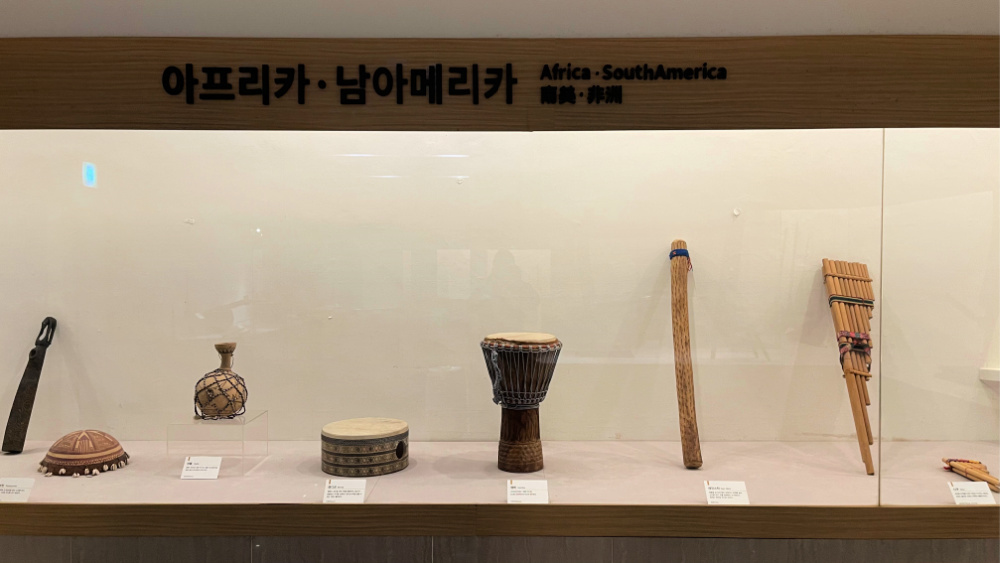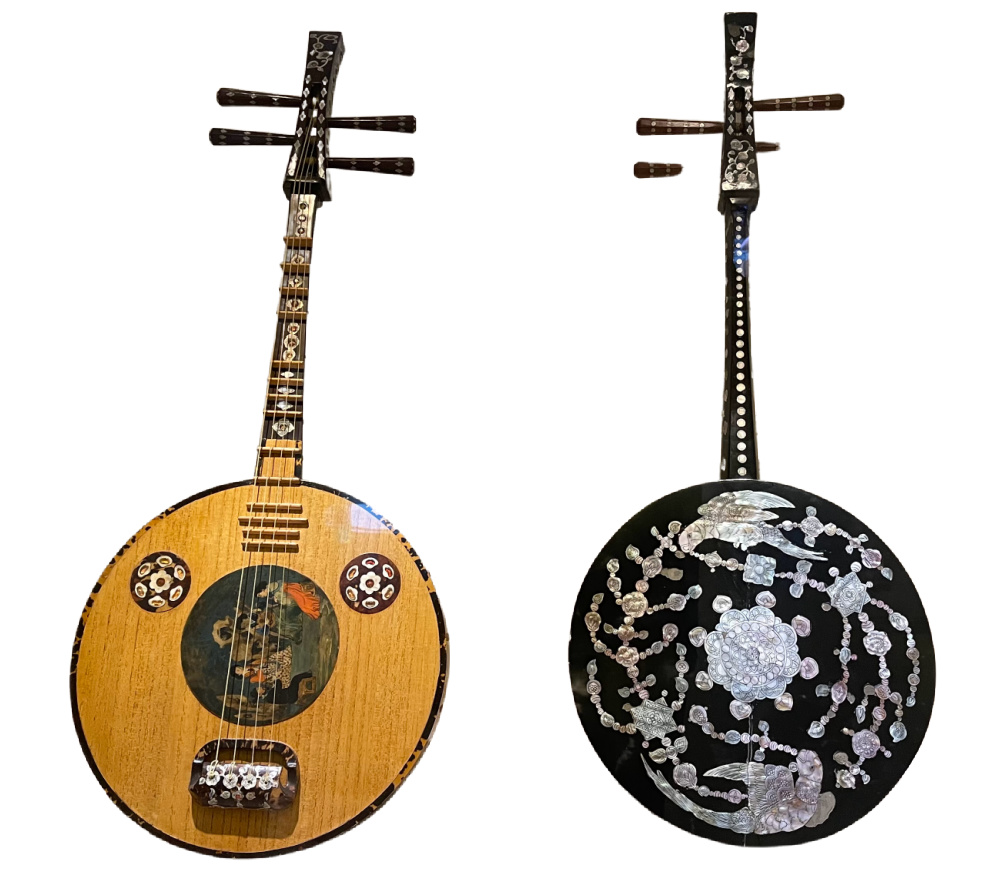Nami Island Liuseum
 The Song Museum Magic Hall that houses the Nami Island Liuseum museum that exhibits international ethnic musical instruments
The Song Museum Magic Hall that houses the Nami Island Liuseum museum that exhibits international ethnic musical instrumentsIntroduction
Nami Island Liseum Museum is a popular attraction in South Korea. It is located on an island just off the southwest coast of the country. The museum holds a variety of exhibitions, including traditional Korean architecture and artifacts, as well as modern art and music performances.
Visitors to the museum can explore traditional Korean culture, including pottery and embroidery, as well as a range of modern art pieces. The beautiful natural scenery of the island also makes for a great backdrop for photographs.
Aside from its historical importance, the Liseum and Nami Island is an important part of South Korea’s current popular culture. It is a major filming location for many Korean dramas, movies, and commercials.
Additionally, Nami Island is home to a number of music festivals throughout the year. With its picturesque landscape and rich cultural history, this museum is sure to be an interesting experience for both tourists and locals alike.
Nami Island can also be a great place to learn more about traditional Korean culture. There are various classes and workshops available to visitors, such as cooking classes, calligraphy lessons, and even a hands-on experience of traditional crafts like paper-making.
Visitors can also take part in a range of cultural activities in the area, including samulnori performances and taekwondo displays.
In addition to its cultural offerings, the island is also home to a number of natural attractions. There are numerous trails and nature walks throughout the island where visitors can take in the stunning views and see some of Korea’s diverse plant and animal life. From large trees to colorful wildflowers, there’s something for everyone.
If you’re looking for something a bit more adventurous, there are plenty of activities to take part in too. The island boasts an array of water sports and outdoor activities, from kayaking and fishing to hiking and biking.
There are also plenty of opportunities for sailing, windsurfing and scuba diving around the island, so you’ll never be short of things to do.
Nami Nara Island Liuseum
Nami Island Liuseum is called World Ethnic Musical Instruments Museum. It was established on Nami Island as home to over three hundred ethnic musical instruments.
I remember that I was excited to explore various musical instruments inside the museum due to their respective unique designs, shapes, and composition of materials.
As I look at them, my mind travels to their respective countries and imagines how their talented players are playing them.
At Liuseum, you will see these instruments collected by Liu Hong-jun, a gifted composer and performer whose achievements include the score of the film The Last Emperor.
Liu Hong-jun decided to donate his collection of ethnic instruments to his close friend, Kang Woo-hyon, the chief executive officer of Nami Island.
Aside from his collection, Liuseum also hosts several exhibitions and performances for the public and visitors of the island.
 Rubab stringed musical instrument of Africa
Rubab stringed musical instrument of AfricaSong Museum
Nami Island Liuseum forms part of Song Museum. It is composed of multiple cultural spaces, such as Swing and Hoban galleries, Magic Hall theater, and a cafe that hosts various popular performances, such as the Sun and Moon.
In the same building, you can find the World Ethnic Music Research Institute and a recording studio where you can record yourself singing your song on the second floor.
 African and South American musical instruments on exhibition at Song Museum's Liuseum on Nami Island.
African and South American musical instruments on exhibition at Song Museum's Liuseum on Nami Island. A 'tambourine' of Africa
A 'tambourine' of Africa Rattle is a musical instrument from Africa
Rattle is a musical instrument from Africa South American musical instruments: quena (left), tarka (Bolivia, center), charango (right)
South American musical instruments: quena (left), tarka (Bolivia, center), charango (right) India-Southeast Asian musical instruments section at Song Museum's Liuseum on Naminara Island
India-Southeast Asian musical instruments section at Song Museum's Liuseum on Naminara Island 'Tambuleleng' is an ethnic stringed musical instrument of the Philippines
'Tambuleleng' is an ethnic stringed musical instrument of the Philippines 'Sitar' is an Indian stringed musical instrument
'Sitar' is an Indian stringed musical instrument Central Asian musical instruments on exhibition at Liuseum on Nami Island
Central Asian musical instruments on exhibition at Liuseum on Nami Island 'Sataer' represents the Uighurs' musical instruments
'Sataer' represents the Uighurs' musical instruments 'Kanun' is a stringed musical instrument of the Uighurs
'Kanun' is a stringed musical instrument of the Uighurs 'Konghou' can be found in China, Japan, and Korea
'Konghou' can be found in China, Japan, and Korea 'Bipa' instruments are quite common in China
'Bipa' instruments are quite common in ChinaHong-jun Liu's Background
Liuseum, as you might have noticed already, is a play of combined two 'words' - Liu and 'seum' - his family name 'Liu' plus the second syllable for museum "seum."
Anyway, according to my source, Liu Hong-jun was originally born in China. Becoming an expert on various musical instruments, he performed as the head flutist in the National Orchestra of China.
Beginning in 1980, he began to be recognized and famed as a traditional flutist and an ethnic music composer in Japan.
If you don't know yet, Liu composed some portions of the score for "The Last Emperor" and "The Silk Road."
During his stay on Nami Island, he enjoyed recording nature's sounds, such as the birds and frogs, and later on incorporated them into the soundtrack of the national anthem of Naminara Republic.
While in Japan, Liu Hong-jun led a traditional music orchestra called "Tenpyo Gafu." His love for playing ethnic music led him to collect such a vast number of ethnic instruments that can be seen in the Song Museum.
Rare Ethnic Musical Instruments
Let me share with you some of the musical instruments you can find at Nami island Liuseum.
Drums
China woodblock drum of China
Egypt Hand Drum
Pottery Drum of Japan
Tabla drum of India and Pakistan
 Sannotsuzumi and Xiyaogu drum musical instruments of Japan
Sannotsuzumi and Xiyaogu drum musical instruments of JapanString Instruments
Pipa of China
Konghou of Korea, China, and Japan
Morin Xuur of Chinese Mongolia
Dan Bau of Vietnam
Karon of China Shinjiang Uighur
Rubab of Pakistan and Afghanistan
Tambuleleng of the Philippines
 Tambuleleng of the Philippines
Tambuleleng of the PhilippinesWind Instruments
Donxiao of Korea and China
Panpipes of Japan
Lusheng of China Miao people
Ocarina of South America
 Didjeridu is a pipe instrument by the Aborigines of Australia. It is peculiarly huge and long.
Didjeridu is a pipe instrument by the Aborigines of Australia. It is peculiarly huge and long.You can also find other exhibits (e.g., clay dolls).
Visiting the exhibits at Nami Island Liuseum should be one of the places you have to explore when on Nami Island.
You can find out more about Nami Island here.
Getting to Nami Island Liuseum
I first visited Nami Island (or Namiseom) a few years back by taking the subway and train with my colleagues. Here is how...
Take the Subway Gyeongchun Line at Sangbong for Gapyeong Station. The trip takes about 50 minutes. The final destination of the train is Chuncheon City, and Gapyeong is six stops before Chuncheon.
- Chuncheon → Gapyeong Station (takes 28 minutes for either direction)
- ITX-Cheongchun Yongsan → Gapyeong Station (about 60 minutes)
- Cheongnyangni → Gapyeong Station (takes about 40 minutes)
Then from Gapyeong Train Station to the Ticket Office of Naminara Island area will take around 20 minutes on foot. It is 1 kilometer and 900 meters only.
Or by bus or taxi from Gapyeong Train Station...
Take Bus #10-4 to the Naminara Island ticketing area, which will take about 5 minutes only. By taxi, it costs 3,800 to 4,500 KRW to reach both directions.
I hope you have a wonderful trip then. Please, share your experiences with us later on.
Get Exciting Activities
Book one of our exciting activities today to experience the thrill of a lifetime! Take advantage of this opportunity and secure your spot in advance.
Hotel Map Guide
Find your affordable, accessible, and comfortable hotel in Seoul at Agoda.Com. See the hotel map below...
Hotel Booking Guide
Find affordable and amazing hotels on Agoda.com using the search box below. Book now to enjoy great discounts and save!







New! Comments
What do you think about this page? Leave me a comment in the box below.